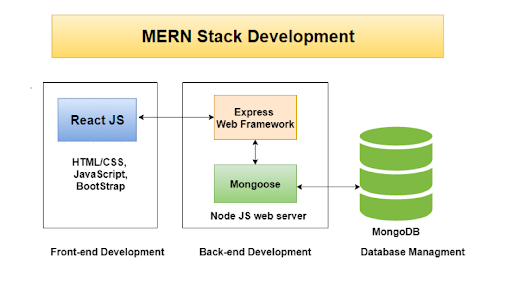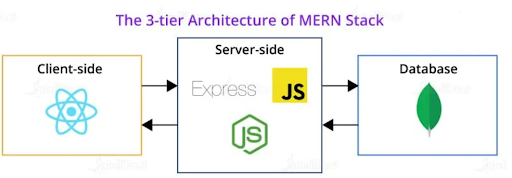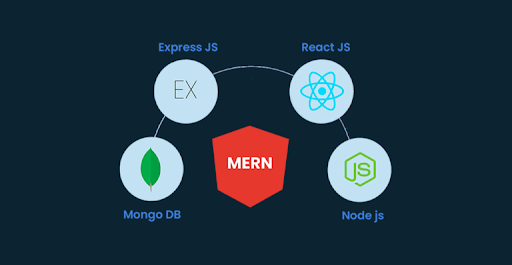In the field of web development, being current with the most relevant technologies is vital for developing robust, scalable applications. One such technology stack that has seen immense growth in popularity is the MERN stack. The demand for MERN Stack Developers has increased dramatically this year from immediate western start-ups into established businesses and everything in between. So, if you are building dynamic, reliable mobile or web applications, the MERN stack is a strong choice. In this Blog we will describe what the MERN stack is, how it works, and describe its fundamental parts.
What is the MERN Stack?
The MERN stack is a JavaScript-based technology stack used to develop full-stack web applications. Each of MongoDB, Express.js, React, and Node.js plays an important role in making an efficient development environment. The benefit of having the MERN is that developers can utilize JavaScript for both client-side and server-side development, providing a unified solution and reducing complexity when switching between languages.
Companies looking to build scalable web applications are often looking to hire MERN Stack developers in India because the skill set covers the entire development lifecycle, front-end interfaces to back-end databases.

How Does the MERN Stack Work?
When you get to the core of the MERN stack, data can easily flow between the front-end and back-end. The MERN stack is an efficient solution for developers. How do they fit in the workflow? The stack works like this:
- MongoDB: This is going to be the database, where all the application slides. All data is stored in a flexible JSON format. It is a NoSQL database so it is simple to scale, making it an excellent qualification for more ambitious projects with a lot of growth.
- Express.js: Express.js is a framework to run on Node.js that is lightweight to ease the back-end development. It is fast and robust when managing routes and handling HTTP body requests.
- React: This is your front-end, allowing dynamic, responsive user interfaces. The component-based architecture allows for re-use, making you develop faster when re-using documentation while providing consistency in the application.
- Node.js: Node.js is the run-time environment to execute the developer’s JavaScript code server-side to help interface front-end and back-end. By using this console, the developer will be able to write both ends of the applications to be JavaScript.

The Components of the MERN Stack
Let’s take a closer look at the four aspects of the MERN stack and see how they relate to one another:
- MongoDB
MongoDB is a NoSQL database that stores data as documents that are like JSON objects. This allows for increased flexibility compared to using a traditional SQL database, especially when you are managing a large amount of data. MongoDB is the ideal option for any application that manages unstructured data; therefore it is a common choice for real-time web applications. It provides developers the ability to effortlessly store, retrieve and manipulate data in a MERN stack application.
- Express.js
Express.js is the back-end framework that runs on Node.js, which primarily addresses the management of HTTP requests, routing, and customer sessions. Express allows developers to easily manage back-end logic when accessing the database, building APIs, and sessions. Express is favorably minimalistic, providing developers great manageability without bloat functionality.
- React
React is the front-end library providing the interactive user interface. React was developed at Facebook and uses a component model to ease the developer interaction to build dynamic web pages. Each UI component can manage its own state providing developers to update and render only portions of the application that would be modified to provide a fast and responsive user experience.
- Node.js
Node.js is the engine that operates the back-end of the MERN stack by allowing JavaScript to execute on the server, providing communication between the front-end interface and back-end data. Node.js is non-blocking and event-driven, which allows the application to handle thousands of concurrent requests simultaneously, building a strong and scalable application.
All four of these technologies make up a practical full-stack development framework, carrying the application progressively from data storage and management to the user interface development.

Conclusion: Why You Should Consider MERN Stack for Your Next Project
The MERN stack offers a comprehensive solution for developers looking to create modern web applications with minimal hassle. Its end-to-end JavaScript environment simplifies both front-end and back-end development, reducing the learning curve and allowing for more efficient workflows. Whether you’re building a small web app or a large-scale project, Full-Stack Development with MERN is versatile enough to handle the job.
If you’re looking to hire MERN stack developers in India, consider CV Infotech. Our experienced developers have a deep understanding of the MERN can bring your vision to life with scalable, responsive applications. At CV Infotech, we take pride in delivering high-quality web solutions that meet your business goals, whether you’re creating a dynamic user interface or a robust back-end system.
Explore more about our services and how we can help you take your web development project to the next level by visiting the CV Infotech website today!





